- Cover
- Acknowledgments
- 1 Preface
- 2 (R)e-Introduction to statistics
- 2.1 Histograms, boxplots, and density curves
- 2.2 Pirate-plots
- 2.3 Models, hypotheses, and permutations for the two sample mean situation
- 2.4 Permutation testing for the two sample mean situation
- 2.5 Hypothesis testing (general)
- 2.6 Connecting randomization (nonparametric) and parametric tests
- 2.7 Second example of permutation tests
- 2.8 Reproducibility Crisis: Moving beyond p < 0.05, publication bias, and multiple testing issues
- 2.9 Confidence intervals and bootstrapping
- 2.10 Bootstrap confidence intervals for difference in GPAs
- 2.11 Chapter summary
- 2.12 Summary of important R code
- 2.13 Practice problems
- 3 One-Way ANOVA
- 3.1 Situation
- 3.2 Linear model for One-Way ANOVA (cell-means and reference-coding)
- 3.3 One-Way ANOVA Sums of Squares, Mean Squares, and F-test
- 3.4 ANOVA model diagnostics including QQ-plots
- 3.5 Guinea pig tooth growth One-Way ANOVA example
- 3.6 Multiple (pair-wise) comparisons using Tukey’s HSD and the compact letter display
- 3.7 Pair-wise comparisons for the Overtake data
- 3.8 Chapter summary
- 3.9 Summary of important R code
- 3.10 Practice problems
- 4 Two-Way ANOVA
- 4.1 Situation
- 4.2 Designing a two-way experiment and visualizing results
- 4.3 Two-Way ANOVA models and hypothesis tests
- 4.4 Guinea pig tooth growth analysis with Two-Way ANOVA
- 4.5 Observational study example: The Psychology of Debt
- 4.6 Pushing Two-Way ANOVA to the limit: Un-replicated designs and Estimability
- 4.7 Chapter summary
- 4.8 Summary of important R code
- 4.9 Practice problems
- 5 Chi-square tests
- 5.1 Situation, contingency tables, and tableplots
- 5.2 Homogeneity test hypotheses
- 5.3 Independence test hypotheses
- 5.4 Models for R by C tables
- 5.5 Permutation tests for the \(X^2\) statistic
- 5.6 Chi-square distribution for the \(X^2\) statistic
- 5.7 Examining residuals for the source of differences
- 5.8 General protocol for \(X^2\) tests
- 5.9 Political party and voting results: Complete analysis
- 5.10 Is cheating and lying related in students?
- 5.11 Analyzing a stratified random sample of California schools
- 5.12 Chapter summary
- 5.13 Summary of important R commands
- 5.14 Practice problems
- 6 Correlation and Simple Linear Regression
- 6.1 Relationships between two quantitative variables
- 6.2 Estimating the correlation coefficient
- 6.3 Relationships between variables by groups
- 6.4 Inference for the correlation coefficient
- 6.5 Are tree diameters related to tree heights?
- 6.6 Describing relationships with a regression model
- 6.7 Least Squares Estimation
- 6.8 Measuring the strength of regressions: R2
- 6.9 Outliers: leverage and influence
- 6.10 Residual diagnostics – setting the stage for inference
- 6.11 Old Faithful discharge and waiting times
- 6.12 Chapter summary
- 6.13 Summary of important R code
- 6.14 Practice problems
- 7 Simple linear regression inference
- 7.1 Model
- 7.2 Confidence interval and hypothesis tests for the slope and intercept
- 7.3 Bozeman temperature trend
- 7.4 Randomization-based inferences for the slope coefficient
- 7.5 Transformations part I: Linearizing relationships
- 7.6 Transformations part II: Impacts on SLR interpretations: log(y), log(x), & both log(y) & log(x)
- 7.7 Confidence interval for the mean and prediction intervals for a new observation
- 7.8 Chapter summary
- 7.9 Summary of important R code
- 7.10 Practice problems
- 8 Multiple linear regression
- 8.1 Going from SLR to MLR
- 8.2 Validity conditions in MLR
- 8.3 Interpretation of MLR terms
- 8.4 Comparing multiple regression models
- 8.5 General recommendations for MLR interpretations and VIFs
- 8.6 MLR inference: Parameter inferences using the t-distribution
- 8.7 Overall F-test in multiple linear regression
- 8.8 Case study: First year college GPA and SATs
- 8.9 Different intercepts for different groups: MLR with indicator variables
- 8.10 Additive MLR with more than two groups: Headache example
- 8.11 Different slopes and different intercepts
- 8.12 F-tests for MLR models with quantitative and categorical variables and interactions
- 8.13 AICs for model selection
- 8.14 Case study: Forced expiratory volume model selection using AICs
- 8.15 Chapter summary
- 8.16 Summary of important R code
- 8.17 Practice problems
- 9 Case studies
- 9.1 Overview of material covered
- 9.2 The impact of simulated chronic nitrogen deposition on the biomass and N2-fixation activity of two boreal feather moss–cyanobacteria associations
- 9.3 Ants learn to rely on more informative attributes during decision-making
- 9.4 Multi-variate models are essential for understanding vertebrate diversification in deep time
- 9.5 What do didgeridoos really do about sleepiness?
- 9.6 General summary
- References
5.10 Is cheating and lying related in students?
A study of student behavior was performed at a university with a survey of
\(N=319\) undergraduate students (cheating data set from the poLCA
package originally published by Dayton (1998)).
They were asked to answer
four questions about their various
academic frauds that involved cheating and lying. Specifically, they were
asked if they had ever lied to avoid taking an exam (LIEEXAM with 1
for no and 2 for yes), if they had lied to avoid handing in a term paper
on time (LIEPAPER with 2 for yes), if they had purchased a term paper
to hand in as their own or obtained a copy of an exam prior to taking the
exam (FRAUD with 2 for yes), and if they had copied answers during an
exam from someone near them (COPYEXAM with 2 for yes). Additionally,
their GPAs were obtained and put into categories: (<2.99, 3.0 to 3.25,
3.26 to 3.50, 3.51 to 3.75, and 3.76 to 4.0). These categories were coded
from 1 to 5, respectively. Again, the code starts with making sure the
variables are treated categorically by applying the factor function.
library(poLCA)
data(cheating) #Survey of students
cheating <- as_tibble(cheating)
cheating$LIEEXAM <- factor(cheating$LIEEXAM)
cheating$LIEPAPER <- factor(cheating$LIEPAPER)
cheating$FRAUD <- factor(cheating$FRAUD)
cheating$COPYEXAM <- factor(cheating$COPYEXAM)
cheating$GPA <- factor(cheating$GPA)
tableplot(cheating, sort=GPA,pals=list("BrBG"))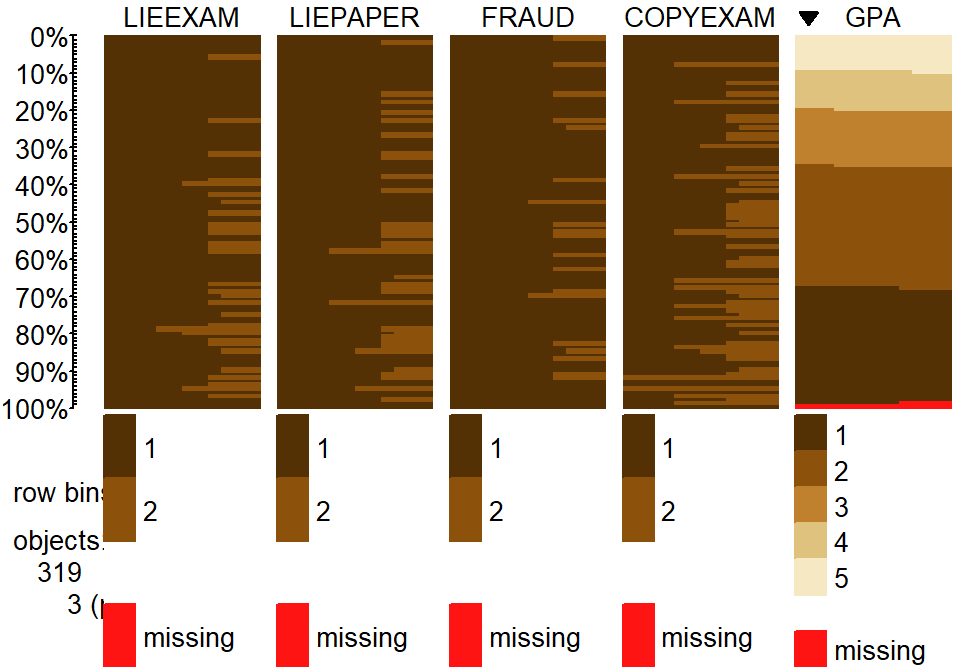
Figure 2.89: Tableplot of initial cheating and lying data set. Note that a few GPAs were missing in the data set.
We can explore some interesting questions about the relationships between
these variables. The
tableplot in Figure 2.89 again helps us to get a general
idea of the data set
and to assess some complicated aspects of the relationships between variables.
For example, the rates of different unethical behaviors seem to decrease with
higher GPA students (but do not completely disappear!). This data set also has
a few missing GPAs that we would want to carefully consider – which sorts of
students might not be willing to reveal their GPAs? It ends up that these
students did not admit to any of the unethical behaviors… Note that we
used the sort=GPA option in the tableplot function to sort the
responses based on GPA to see how GPA might relate to patterns of
unethical behavior.
While the relationship between GPA and presence/absence of the different behaviors is of interest, we want to explore the types of behaviors. It is possible to group the lying behaviors as being a different type (less extreme?) of unethical behavior than obtaining an exam prior to taking it, buying a paper, or copying someone else’s answers. We want to explore whether there is some sort of relationship between the lying and copying behaviors – are those that engage in one type of behavior more likely to do the other? Or are they independent of each other? This is a hard story to elicit from the previous plot because there are so many variables involved.
To simplify the results, combining the two groups of variables
into the four possible combinations on
each has the potential to simplify the results – or at least allow exploration
of additional research questions. The interaction function is used to create two new variables that have four levels that are combinations of the different options from none to both of each type (copier and liar). In the tableplot in
Figure 2.90, you can see
the four categories for each, starting with no bad behavior of either type
(which is fortunately the most popular response on both variables!). For each
variable, there are students who admitted to one of the two violations and some
that did both. The liar variable has categories of None, ExamLie,
PaperLie, and LieBoth. The copier variable has categories of None,
PaperCheat, ExamCheat, and PaperExamCheat (for doing both). The last
category for copier seems to mostly occur at
the top of the plot which is where the students who had lied to get out of things
reside, so maybe there is a relationship between those two types of behaviors?
On the other hand, for the students who have never lied, quite a few had
cheated on exams. The contingency table can help us dig further into the
hypotheses related to the Chi-square test of Independence that is appropriate
in this situation.
(ref:fig5-19) Tableplot of new variables liar` andcopier`` that allow
exploration of relationships between different types of lying and
cheating behaviors.
cheating$liar <- interaction(cheating$LIEEXAM, cheating$LIEPAPER)
levels(cheating$liar) <- c("None","ExamLie","PaperLie","LieBoth")
cheating$copier <- interaction(cheating$FRAUD, cheating$COPYEXAM)
levels(cheating$copier) <- c("None","PaperCheat","ExamCheat","PaperExamCheat")
cheatlietable <- tally(~liar+copier, data=cheating)
cheatlietable## copier
## liar None PaperCheat ExamCheat PaperExamCheat
## None 207 7 46 5
## ExamLie 10 1 3 2
## PaperLie 13 1 4 2
## LieBoth 11 1 4 2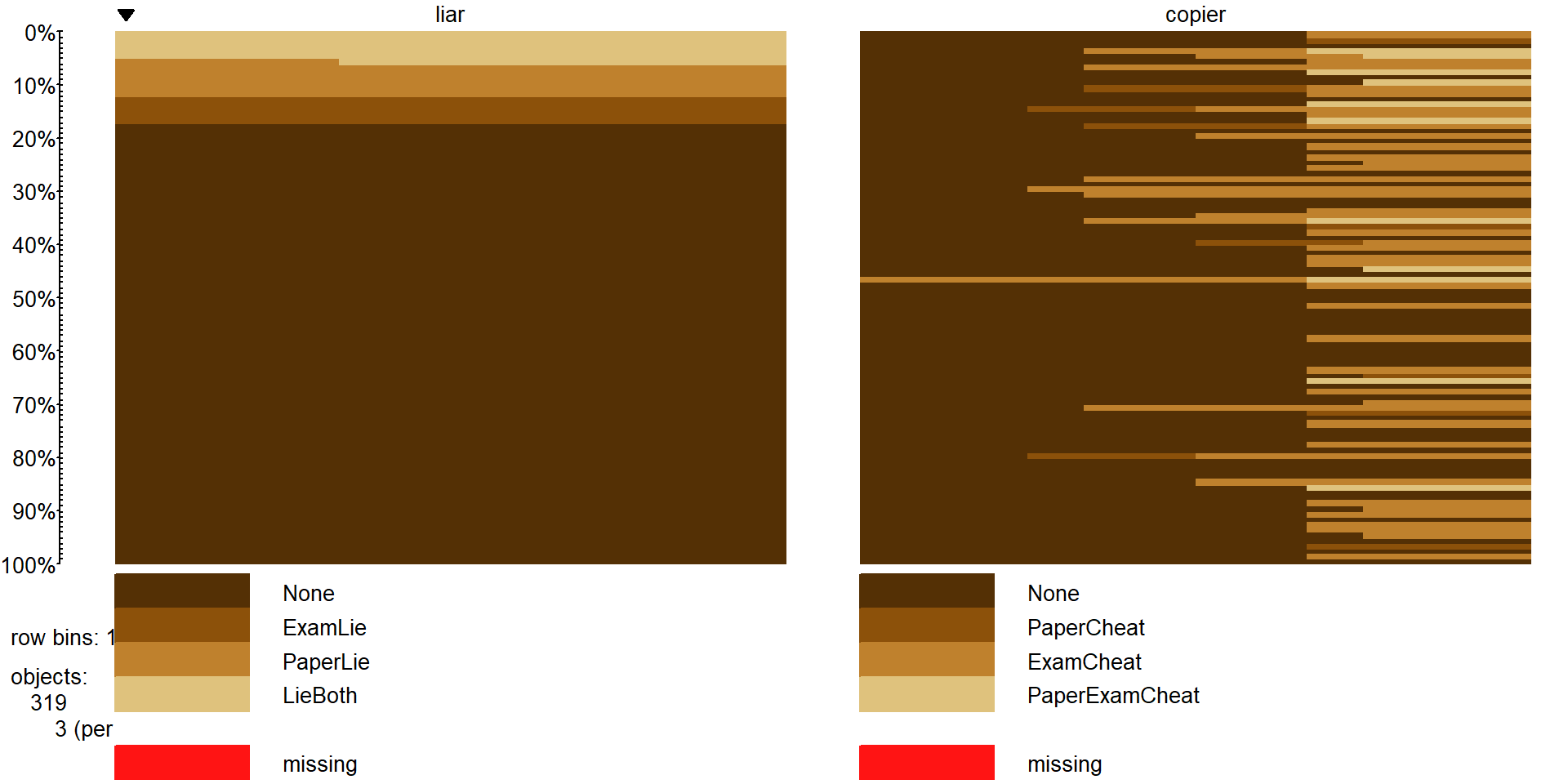
Figure 2.90: (ref:fig5-19)
Unfortunately for our statistic, there were very few responses in some combinations of
categories even with \(N=319\). For example, there was only one response
each in the combinations for students that copied on papers and lied
to get out of exams, papers, and both. Some other categories were pretty small
as well in the groups that only had one behavior present. To get a higher
number of counts in the combinations, we combined the single behavior only levels
into “either” categories and left the none and both categories for each
variable. This creates two new variables called liar2 and copier2
(tableplot in Figure 2.91). The code to create these
variables and make the plot is below which employs the levels function to assign the same label to two different levels from the original list.
(ref:fig5-20) Tableplot of lying and copying variables after combining categories.
#Collapse the middle categories of each variable
cheating$liar2 <- cheating$liar
levels(cheating$liar2) <- c("None","ExamorPaper","ExamorPaper","LieBoth")
cheating$copier2 <- cheating$copier
levels(cheating$copier2) <- c("None","ExamorPaper","ExamorPaper","CopyBoth")
tableplot(cheating, sort=liar2, select=c(liar2,copier2),pals=list("BrBG"))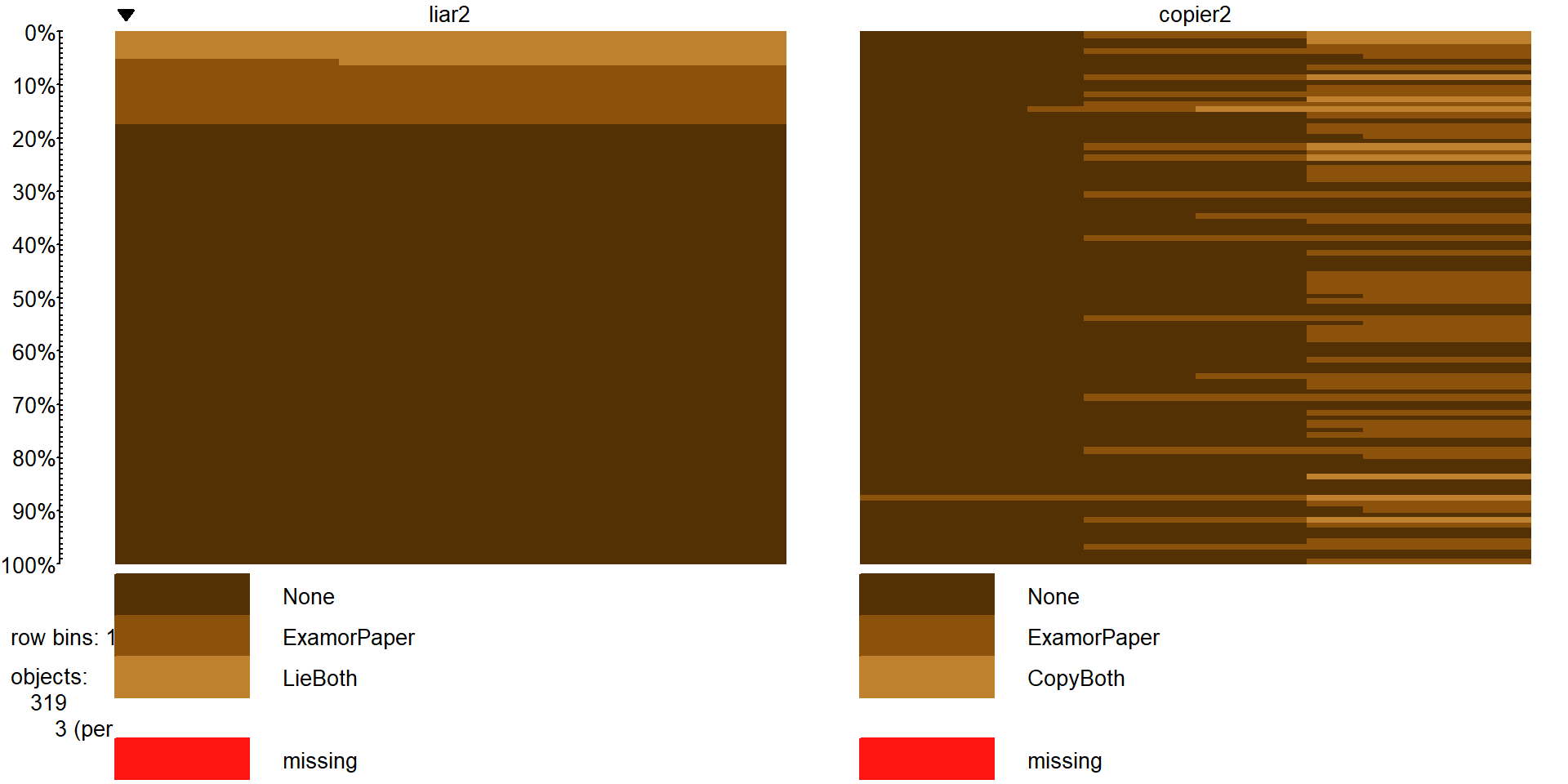
Figure 2.91: (ref:fig5-20)
## copier2
## liar2 None ExamorPaper CopyBoth
## None 207 53 5
## ExamorPaper 23 9 4
## LieBoth 11 5 2This \(3\times 3\) table is more manageable and has few really small cells so we will proceed with the 6+ steps of hypothesis testing applied to these data using the Independence testing methods (again a single sample was taken from the population so that is the appropriate procedure to employ):
The RQ is about relationships between lying to instructors and cheating and these questions, after some work and simplifications, allow us to address a version of that RQ even though it might not be the one that we started with. The tableplots help to visualize the results and the \(X^2\)-statistic will be used to do the hypothesis test.
Hypotheses:
\(H_0\): Lying and copying behavior are independent in the population of students at this university.
\(H_A\): Lying and copying behavior are dependent in the population of students at this university.
Validity conditions:
Independence:
- There is no indication of a violation of this assumption since each subject is measured only once in the table. No other information suggests a potential issue but we don’t have much information on how these subjects were obtained. What happens if we had sampled from students in different sections of a multi-section course and one of the sections had recently had a cheating scandal that impacted many students in that section?
All expected cell counts larger than 5 (required to use \(\chi^2\)-distribution to find p-values):
- We need to generate a table of expected cell counts to check this condition:
## copier2 ## liar2 None ExamorPaper CopyBoth ## None 200.20376 55.658307 9.1379310 ## ExamorPaper 27.19749 7.561129 1.2413793 ## LieBoth 13.59875 3.780564 0.6206897When we request the expected cell counts, there is a warning message (not shown).
There are three expected cell counts below 5, so the condition is violated and a permutation approach should be used to obtain more trustworthy p-values.
Calculate the test statistic and p-value:
- Use
chisq.testto obtain the test statistic, although this table is small enough to do by hand if you want the practice – see if you can find a similar answer to what the function provides:
## ## Pearson's Chi-squared test ## ## data: cheatlietable ## X-squared = 13.238, df = 4, p-value = 0.01017The \(X^2\) statistic is 13.24.
The parametric p-value is 0.0102 from the R output. This was based on a \(\chi^2\)-distribution with \((3-1)*(3-1) = 4\) degrees of freedom that is displayed in Figure 2.92. Remember that this isn’t quite the right distribution for the test statistic since our expected cell count condition was violated.
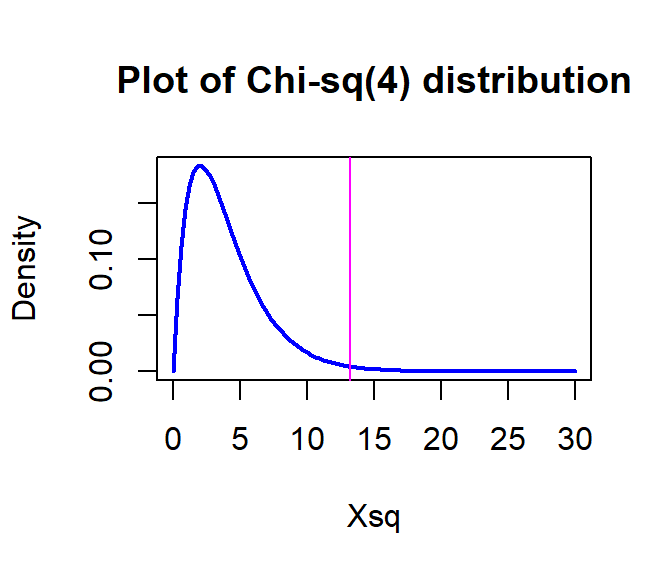
Figure 2.92: Plot of \(\boldsymbol{\chi^2}\)-distribution with 4 degrees of freedom.
- If you want to repeat the p-value calculation directly:
## [1] 0.01016781- But since the expected cell condition is violated, we should use permutations as implemented in the following code with the number of permutations increased to 10,000 to help get a better estimate of the p-value since it is possibly close to 0.05:
## X-squared ## 13.23844par(mfrow=c(1,2)) B <- 10000 # Now performing 10,000 permutations Tstar <- matrix(NA,nrow=B) for (b in (1:B)){ Tstar[b] <- chisq.test(tally(~shuffle(liar2)+copier2, data=cheating))$statistic } pdata(Tstar, Tobs, lower.tail=F)[[1]]## [1] 0.0174hist(Tstar) abline(v=Tobs, col="red", lwd=3) plot(density(Tstar), main="Density curve of Tstar", lwd=2) abline(v=Tobs, col="red", lwd=3)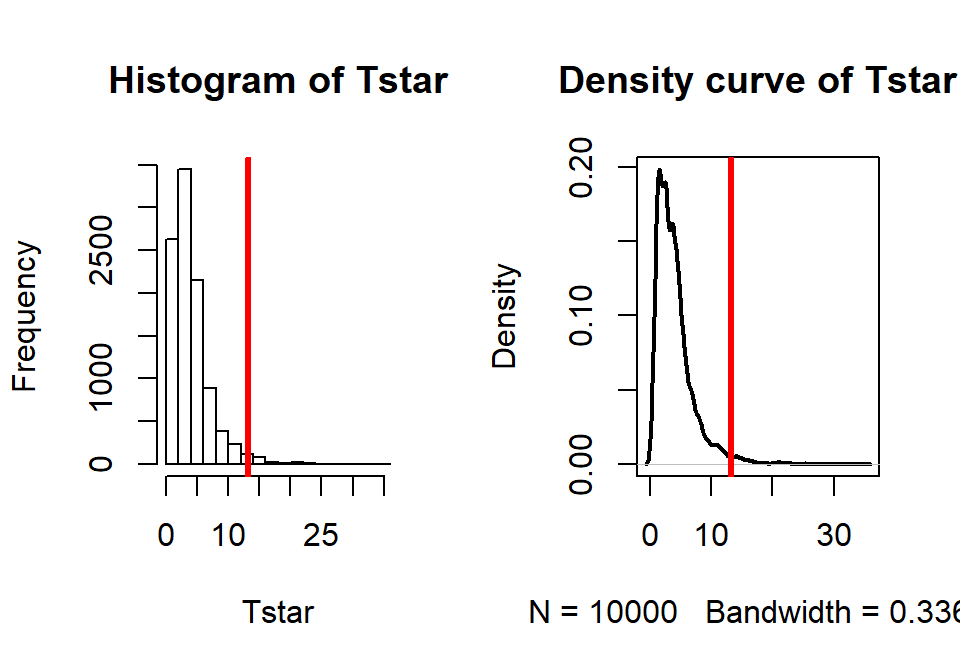
Figure 2.93: Plot of permutation distributions for cheat/lie results with observed value of 13.24 (bold, vertical line).
- There were 174 of \(B\)=10,000 permuted data sets that produced as large or larger \(X^{2*}\text{'s}\) than the observed as displayed in Figure 2.93, so we report that the p-value was 0.0174 using the permutation approach, which was slightly larger than the result provided by the parametric method.
- Use
Conclusion:
- There is strong evidence against the null hypothesis of no relationship between lying and copying behavior in the population of students (\(X^2\)-statistic=13.24, permutation p-value of 0.0174), so conclude that there is a relationship between lying and copying behavior at the university in the population of students studied.
Size:
- The standardized residuals can help us more fully understand this result – the mosaic plot only had one cell shaded and so wasn’t needed here.
## copier2
## liar2 None ExamorPaper CopyBoth
## None 0.4803220 -0.3563200 -1.3688609
## ExamorPaper -0.8048695 0.5232734 2.4759378
## LieBoth -0.7047165 0.6271633 1.7507524* There is really only one large standardized residual for the *ExamorPaper* liars and the *CopyBoth* copiers, with a much larger observed value than expected of 2.48. The only other medium-sized standardized residuals came from the *CopyBoth* copiers column with fewer than expected students in the *None* category and more than expected in the *LieBoth* type of lying category. So we are seeing more than expected that lied somehow and copied -- we can say this suggests that the students who lie tend to copy too!Scope of inference:
- There is no causal inference possible here since neither variable was randomly assigned (really neither is explanatory or response here either) but we can extend the inferences to the population of students that these were selected from that would be willing to reveal their GPA (see initial discussion related to some differences in students that wouldn’t answer that question).
References
Dayton, C. Mitchell. 1998. Latent Class Scaling Analysis. Thousand Oaks, CA: SAGE Publications.